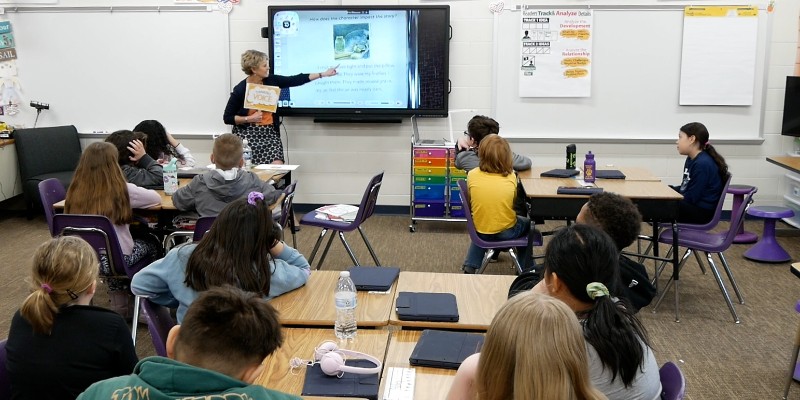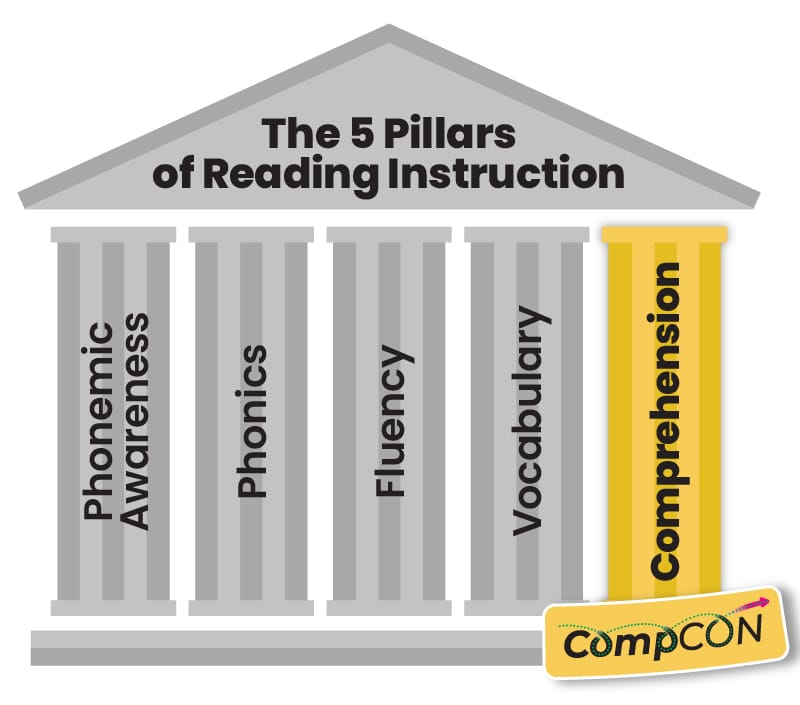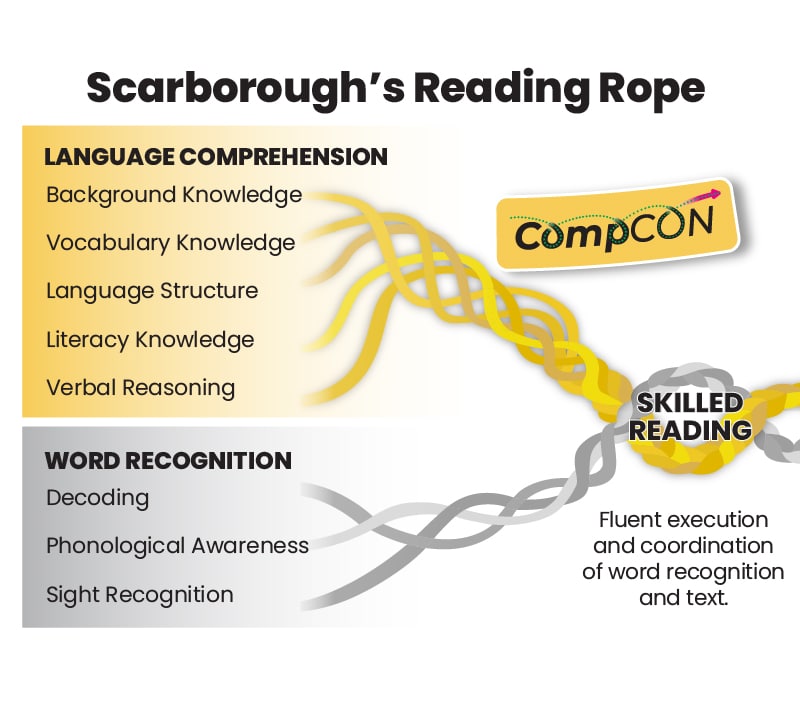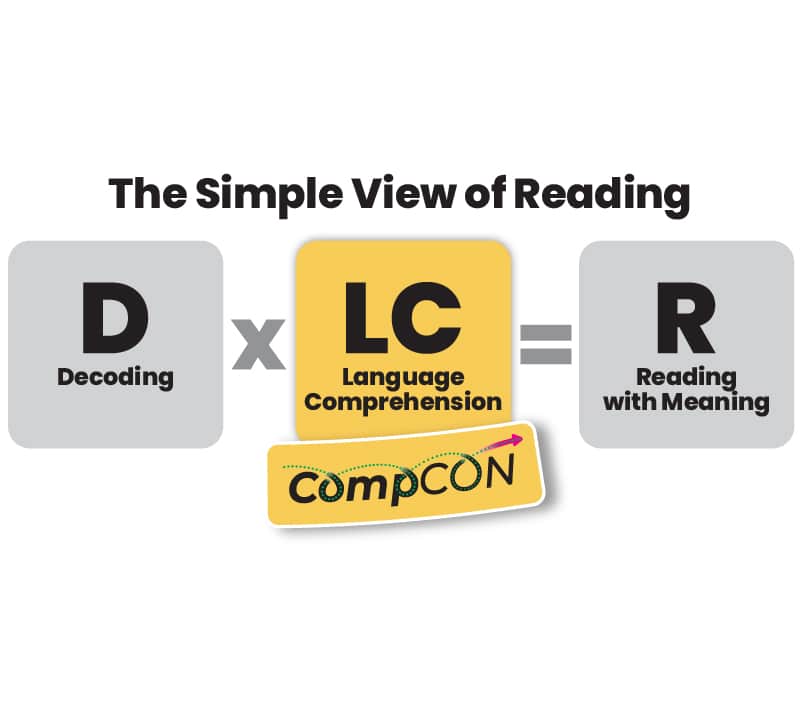
Get science of reading support
Teach reading comprehension with the gradual release of responsibility
Learning the necessary skills to comprehend reading is hard work. That’s why, when teaching reading comprehension, it’s so important to deliver instruction that builds a scaffold of understanding, piece by piece. And when one employs the gradual release of responsibility, it creates such a scaffold.
While the gradual-release framework is applicable in all content areas, the I-do, We-do, You-do rhythm is particularly relevant when teaching reading comprehension skills.

I do: Direct instruction
The gradual release of responsibility begins with an I do and the “I” is you, the teacher. For students to learn a reading comprehension skill, they first need to see their teacher, the expert, apply the skill by herself within a reading experience.
In a 4-step comprehension mini-lesson, the I do occurs within Step 2 which has two parts.
In Step 2A, plan to spend about five minutes explaining the skill. The purpose of this segment is to lay the groundwork for how the skill works.
After the five-minute explanation, Step 2B represents the next five minutes. This is when you will demonstrate the comprehension skill in action while sharing every step of your thinking while performing the skill.
During Step 2B of a comprehension mini-lesson, the teacher will read an excerpt and execute her thinking on that one skill—live and in front of the students.
Even though Step 2 is referred to as the I do, students have a role to play also.
While I (the teacher) do, you (the students) watch and listen.
The I do is an opportunity for students to listen in as the teacher shares her otherwise invisible thoughts behind a reading comprehension skill. It’s during the I do that students learn how a complex skill works during the reading process.
We do: More direct instruction
After delivering the I-do segment of a comprehension mini-lesson, it’s tempting to expect too much from the students during the We do.
Instead, think of the We do more precisely as: I do another one; you help me.
The We do is another very controlled five minutes of the mini-lesson. The teacher reads aloud another text excerpt and reveals her pre-planned journey of thinking that answers the same skill-based questions.
Because it’s the We do, students are encouraged to participate in the thinking process. However, don’t expect students to contribute much at this stage. Remember, they are learning a new and complex skill that was introduced and demonstrated just moments earlier during the I do.
To lead an effective We do during a reading comprehension mini-lesson, reread the excerpt, set up the question, and pause to give students a chance to consider the answer before identifying the correct thinking.
The more experiences students have with the skill during the We do, the more successful they will be after the lesson in the You do.
You do: Practice with support
In the I-do, We-do, You-do instructional model, the You do happens after the mini-lesson concludes. This is when students are given the opportunity to experience the skill that was just taught.
But, keep in mind, you are still following the gradual release of responsibility. In other words, the end of the lesson isn’t the time to hand out independent or at-home assignments.
Instead, the You do is another gradual release toward independence. It’s not, You’re on your own and good luck. Instead, it’s You do, but I’m going to stay close by. It’s You do, and I help a lot.
During reading comprehension mini-lessons, these first You-do practices are often experienced within numerous whole-class read alouds. Such “practice” opportunities allow kids to pool their thinking in order to come up with an answer.
Their initial successes transition into students dabbling with the skill within collaborative small groups before being released to continue their practice in pairs.
In these early stages of the You do, students gain confidence in applying the skill, but the teacher is nearby to redirect as necessary. You do, I help less and less.
Eventually, the teacher ups the ante by assigning the skill within independent You-do tasks, like homework, literacy stations, and assessments.
When teaching a reading comprehension skill, using the I-do, We-do, You-do gradual release framework is the necessary scaffold to achieve the end goal: students can apply a skill independently while reading authentic text.
2024 SUMMER CONFERENCE



Gain tools & techniques you need to
teach reading comprehension
VIRTUAL EVENT
June 11-12, 2024
FRENCH LICK RESORT
June 18-19, 2024
How CompCON supports the science of reading


Educational research surrounding the science of reading has heightened the need for teaching phonics and specifically decoding. But, as we know from the research conducted by the National Reading Panel, effective reading instruction requires a combination of direct, explicit teaching of all five pillars of literacy: phonological awareness, phonics, fluency, vocabulary, and comprehension.
While each of these components is important and necessary, CompCON focuses specifically on the pillar of reading comprehension. CompCON attendees spend two days learning practical and engaging lessons to deliver explicit, standards-based comprehension instruction.


Dr. Hollis Scarborough’s iconic Reading Rope reveals the essential strands for reading development. While many science of reading initiatives target the Word Recognition strand of Scarborough’s Reading Rope, CompCON addresses the Language Comprehension strand.
As important as it is that students learn how to decode words, they must simultaneously learn how to think about the words they are reading. This requires whole-class, teacher-led instruction on comprehension skills and strategies—and this is the focus of CompCON.


According to the Simple View of Reading formula, both word recognition and language comprehension are necessary to create a proficient reader.
The Simple View of Reading provides an argument for teaching decoding and phonics with intentionality. Likewise, direct instruction on teaching language comprehension is imperative as well.
Consequently, K-12 educators need to have whole-class lessons that target grade-level comprehension instruction—and this is the focus of CompCON.


